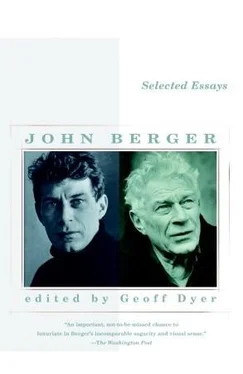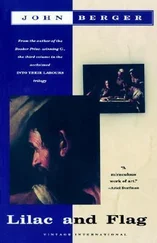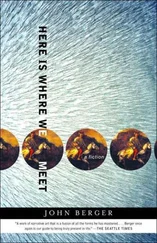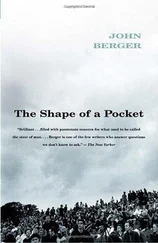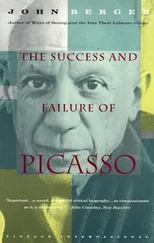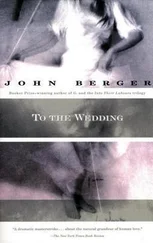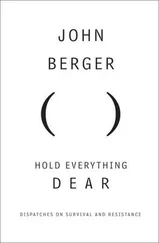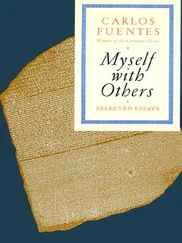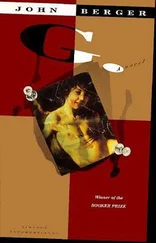The third dimension, the solidity of the chair, the body, the tree, is, at least as far as our senses are concerned, the very proof of our existence. It constitutes the difference between the word and the world. As I looked at the model I marvelled at the simple fact that he was solid, that he occupied space, that he was more than the sum total of ten thousand visions of him from ten thousand different viewpoints. In my drawing, which was inevitably a vision from just one point of view, I hoped eventually to imply this limitless number of other facets. But now it was simply a question of building and refining forms until their tensions began to be like those I could see in the model. It would of course be easy by some mistaken over-emphasis to burst the whole thing like a balloon; or it might collapse like too-thin clay on a potter’s wheel; or it might become irrevocably misshapen and lose its centre of gravity. Nevertheless, the thing was there. The infinite, opaque possibilities of the blank page had been made particular and lucid. My task now was to coordinate and measure: not to measure by inches as one might measure an ounce of sultanas by counting them, but to measure by rhythm, mass and displacement: to gauge distances and angles as a bird flying through a trellis of branches; to visualize the ground plan like an architect; to feel the pressure of my lines and scribbles towards the uttermost surface of the paper, as a sailor feels the slackness or tautness of his sail in order to tack close or far from the surface of the wind.
I judged the height of the ear in relation to the eyes, the angles of the crooked triangle of the two nipples and the navel, the lateral lines of the shoulders and hips — sloping towards each other so that they would eventually meet, the relative position of the knuckles of the far hand directly above the toes of the far foot. I looked, however, not only for these linear proportions, the angles and lengths of these imaginary pieces of string stretched from one point to another, but also for the relationships of planes, of receding and advancing surfaces.
Just as looking over the haphazard roofs of an unplanned city you find identical angles of recession in the gables and dormer-windows of quite different houses — so that if you extended any particular plane through all the intermediary ones, it would eventually coincide perfectly with another; in exactly the same way you find extensions of identical planes in different parts of the body. The plane, falling away from the summit of the stomach to the groin, coincided with that which led backwards from the near knee to the sharp, outside edge of the calf. One of the gentle, inside planes, high up on the thigh of the same leg, coincided with a small plane leading away and around the outline of the far pectoral muscle.
And so, as some sort of unity was shaped and the lines accumulated on the paper, I again became aware of the real tensions of the pose. But this time more subtly. It was no longer a question of just realizing the main, vertical stance. I had become involved more intimately with the figure. Even the smaller facts had acquired an urgency and I had to resist the temptation to make every line over-emphatic. I entered into the receding spaces and yielded to the oncoming forms. Also, I was correcting: drawing over and across the earlier lines to reestablish proportions or to find a way of expressing less obvious discoveries. I saw that the line down the centre of the torso, from the pit of the neck, between the nipples, over the navel and between the legs, was like the keel of a boat, that the ribs formed a hull and that the near, relaxed leg dragged on its forward movement like a trailing oar. I saw that the arms hanging either side were like the shafts of a cart, and that the outside curve of the weight-bearing thigh was like the ironed rim of a figure on a crucifix. Yet such images, although I have chosen them carefully, distort what I am trying to describe. I saw and recognized quite ordinary anatomical facts; but I also felt them physically — as if, in a sense, my nervous system inhabited his body.
A few of the things I recognized I can describe more directly. I noticed how at the foot of the hard, clenched, weight-bearing leg, there was clear space beneath the arch of the instep. I noticed how subtly the straight under-wall of the stomach elided into the attenuated, joining planes of thigh and hip. I noticed the contrast between the hardness of the elbow and the vulnerable tenderness of the inside of the arm at the same level.
Then, quite soon, the drawing reached its point of crisis. Which is to say that what I had drawn began to interest me as much as what I could still discover. There is a stage in every drawing when this happens. And I call it a point of crisis because at that moment the success or failure of the drawing has really been decided. One now begins to draw according to the demands, the needs, of the drawing. If the drawing is already in some small way true, then these demands will probably correspond to what one might still discover by actual searching. If the drawing is basically false, they will accentuate its wrongness.
I looked at my drawing trying to see what had been distorted; which lines or scribbles of tones had lost their original and necessary emphasis, as others had surrounded them; which spontaneous gestures had evaded a problem, and which had been instinctively right. Yet even this process was only partly conscious. In some places I could clearly see that a passage was clumsy and needed checking; in others, I allowed my pencil to hover around — rather like the stick of a water-diviner. One form would pull, forcing the pencil to make a scribble of tone which could re-emphasize its recession; another would jab the pencil into restressing a line which could bring it further forward.
Now when I looked at the model to check a form, I looked in a different way. I looked, as it were, with more connivance: to find only what I wanted to find.
Then the end. Simultaneously ambition and disillusion. Even as in my mind’s eye I saw my drawing and the actual man coincide — so that, for a moment, he was no longer a man posing but an inhabitant of my half-created world, a unique expression of my experience — even as I saw this in my mind’s eye, I saw in fact how inadequate, fragmentary, clumsy my small drawing was.
I turned over the page and began another drawing, starting from where the last one had left off. A man standing, his weight rather more on one leg than the other …
1953
In a period of cultural disintegration — such as ours in the West today — it is hard to assess the value of an individual talent. Some artists are clearly more gifted than others and people who profoundly understand their particular media ought to be able to distinguish between those who are more and those who are less gifted. Most contemporary criticism is exclusively concerned with making this distinction; on the whole, the critic today accepts the artist’s aims (so long as they do not challenge his own function) and concentrates on the flair or lack of it with which they have been pursued. Yet this leaves the major question begging: how far can talent exempt an artist if he does not think beyond or question the decadence of the cultural situation to which he belongs?
Perhaps our obsession with genius, as opposed to talent, is an instinctive reaction to this problem, for the genius is by definition a man who is in some way or another larger than the situation he inherits. For the artist himself the problem is often deeply tragic; this was the question, I believe, which haunted men like Dylan Thomas and John Minton. Possibly it also haunted Jackson Pollock and may partly explain why in the last years of his life he virtually stopped painting.
Читать дальше
